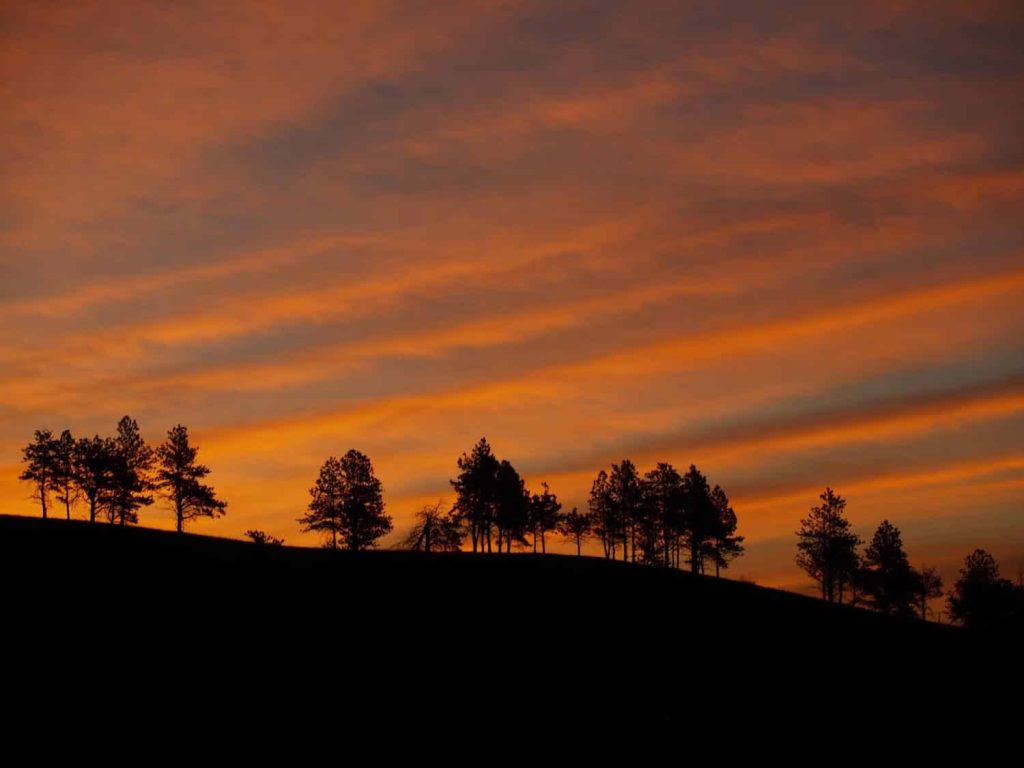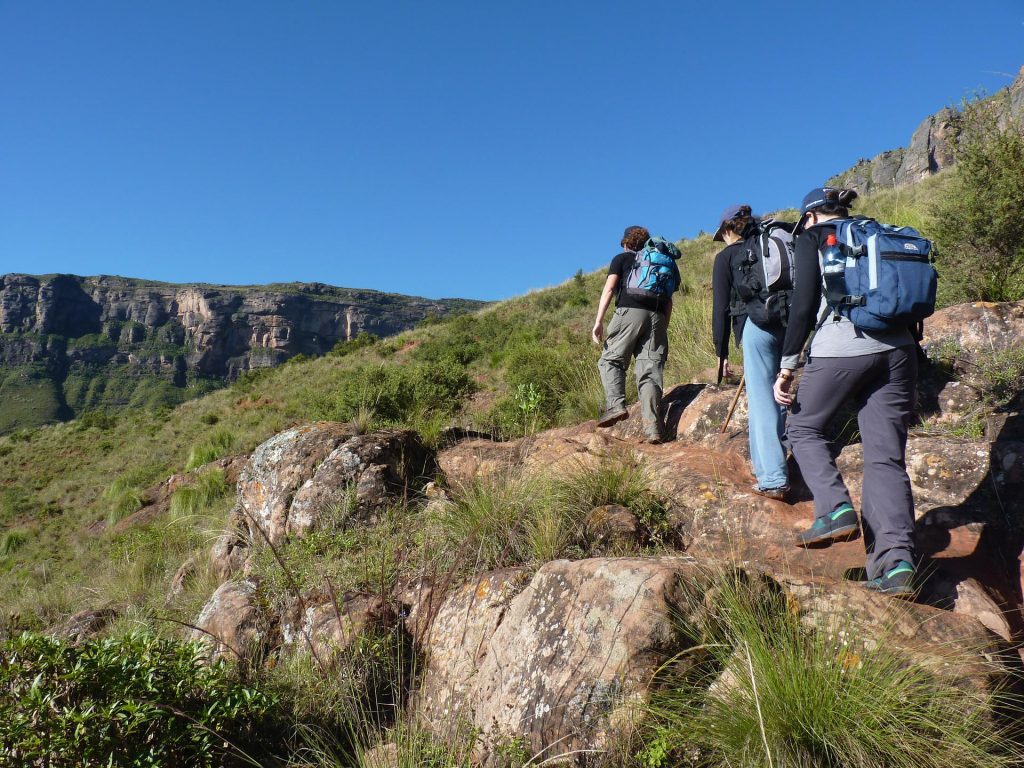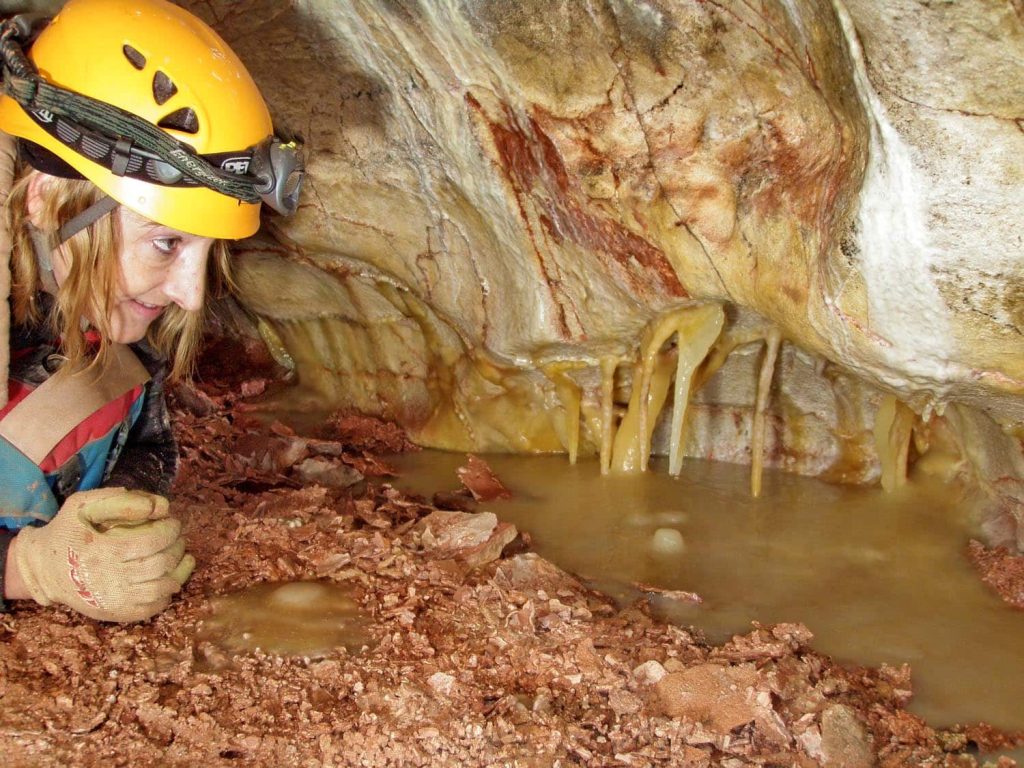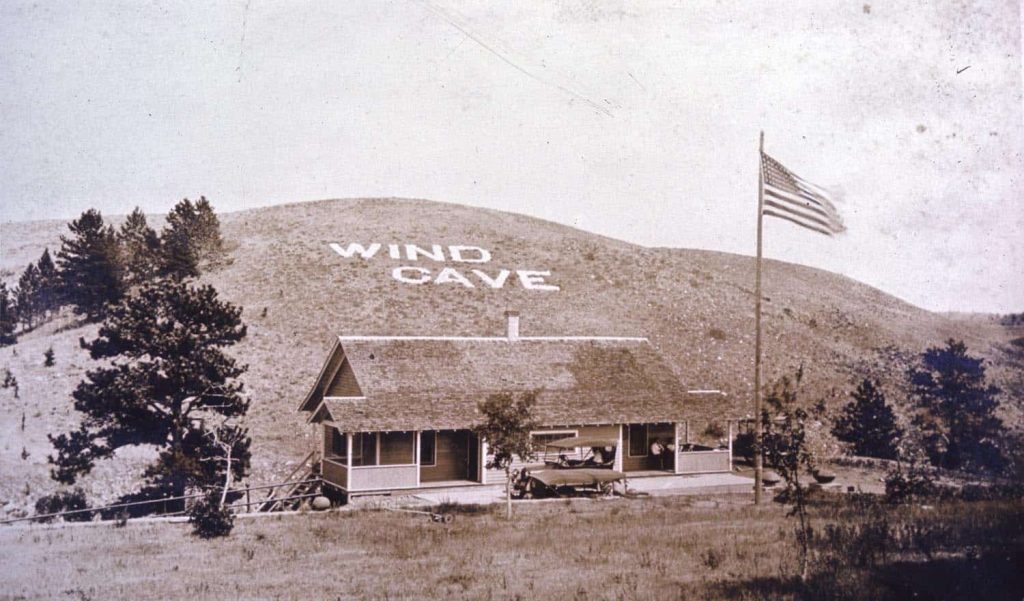As the world’s first cave to be named a national park, Wind Cave is an outstanding addition to the National Park Service. It is the world’s longest and most complex cave system, with 149 miles of explored passages containing intricate box work and frostwork formations.
Many miss its allure by only noticing the undulating prairie that lies above this geologic anomaly. In fact, the cave’s discovery by white Americans came from two brothers peering into a 10” x 14” hole as the wind whistled out of it. By knocking the hat off the boys’ heads, Wind Cave acquired a name and a reputation.
Why Visit Wind Cave National Park in an RV?

Wind Cave is an excellent destination for RVers who enjoy hidden gems underground and the rolling hills and ranchland above. The park has one campground with plenty of space for motorhomes and travel trailers.
After hiking over scenic trails, then cooling off in the cave, RVers quickly realize that Wind Cave National Park has even more going for it.
The park lies amid many other nationally recognized attractions. In fact, its northern border is next to the popular Custer State Park. Crazy Horse Memorial and Mount Rushmore National Memorial are also nearby.
Using Wind Cave as a base camp offers great accessibility and a quieter, more relaxing camping experience away from the crowds of these other venues.
When to Visit Wind Cave National Park

The park is accessible year-round, with its visitor center closed only on Thanksgiving, Christmas, and New Year’s Day. If you enjoy the varied wildlife here, remember that most animals are more active in cool temperatures. Cave tours continue all year but have a limited schedule during the winter months.
Wind Cave National Park in the Spring
The park receives approximately 18-inches of rain annually, with most falling during the spring. If visiting during this time of year, make sure you bring a raincoat.
Wind Cave National Park in the Summer
Summers, while hot and dry, do tend to produce regular thunderstorms. Most are short, but some can come with large hail and severe lightning, so always seek cover should one pop up while visiting.
Wind Cave National Park in the Fall
The fall months see warm, dry days and cool evenings, making it one of the most pleasant times to plan a visit.
Wind Cave National Park in the Winter
Winter storms often bring snow and can sometimes close roads within Wind Cave National Park, so always check online for closures if planning an off-season visit.
Where to Stay

Wind Cave offers the perfect setting for RV vacations, with one campground within the park’s boundaries. The Elk Mountain Campground is open year-round and offers 48 RV sites. Flush toilets and running water are available from late spring through early fall, but there are no hookups or showers.
Backcountry camping is permitted in the northern part of the park, but permits are required.
Staying Outside the Park
If you would prefer to camp outside the park, here are a few of the many private campgrounds in the area:
- Beaver Lake Campground: About 30 minutes north of the visitor center.
- Buffalo Ridge Camp Resort: About 20 minutes north of the visitor center.
- Sunrise Ridge Campground: About 10 minutes south of the visitor center.
- Fort Welikit Family Campground: About 30 minutes north of the visitor center.
Invest in a Good Sam Membership and save 10% on nightly stays at Good Sam Campgrounds
Tips for your Camping Stay
- Reservations for stays inside the park can be made through recreation.gov.
- Cellphone reception and internet connectivity are not available at the park’s campground.
- There’s no dump station in the park. The nearest dump station will be at one of the RV parks nearby.
- The maximum RV and trailer length for Elk Mountain Campground is 40 feet.
- There are no food storage lockers in the campground. All food should be secured inside your RV or tow vehicle each night.
How to Get Around Wind Cave National Park

From Hot Springs, South Dakota, travel six miles north on US Highway 385 to the park entrance. If coming from the town of Custer, travel 20 miles south on US Highway 385.
Once in the park, visitors travel on the two paved roads, US Highway 385 and South Dakota Highway 87. The visitor center lies just inside the park entrance on Highway 385, where cave tours begin, but both roads have pullouts and scenic views throughout the park.
There are also two gravel roads that take travelers to less developed areas of the park. They are suitable for two-wheel drive vehicles but are narrow and may have wildlife around to navigate.
Places to Go

There are numerous places to visit while in the park, so you’ll have plenty to see and do. A few places to stop are:
The Visitor Center
Located at the entrance to the park, the visitor center offers a movie about the cave’s formation and discovery, a bookstore, exhibits, and cave tours. Rangers are available to answer questions and disperse backcountry permits.
Sanson Ranch
A 5,000-acre historic ranch and homestead include a 1,000-year-old buffalo jump, where Native Americans hunted bison, forcing them off low cliffs. There are also remnants of old tipi rings showcasing hundreds of years of habitation in the area.
Things to Do in Wind Cave National Park

In addition to plenty of spots to visit and things to see, you will also have plenty of activities to do here in the Black Hills.
Hiking
The park has 30 miles of hiking trails, moving through meadows, mixed grass prairies, prairie dog towns, and forests. It is possible that hikers will encounter wildlife like bison, elk, and mountain lions, so be aware of your surroundings and their regulations. Each nature trail is designated by level of difficulty:
Easy Trails:
- Elk Mountain
- Prairie Vista
- Rankin Ridge
- Wind Cave Canyon
Moderate Trails:
- Cold Brook Canyon
- Lookout Point
Strenuous Trails:
- Sanctuary
- East Bison Flats
- Centennial
- Highland Creek
- Boland Ridge
Guided Cave Tours

Wind Cave National Park is home to one of the longest cave systems in the world. The only way to explore these caves is on a guided tour. Ranger-led tours come in two varieties: walking tours and specialty tours.
Walking Tours:
- Garden of Eden Tour
- Natural Entrance Tour
- Fairgrounds Tour
Specialty Tours:
- Candlelight Tour
- Wild Cave Tour
All tours are limited in the number of participants, and tickets are sold on a first-come, first-served basis. The tours have different levels of difficulty. Make a point to read the descriptions of each, as some involve crawling through tight places, off-trail hiking, and numerous stairs.
What to Bring and How to Prepare

- The weather in the park is often unpredictable. It’s wise to pack layers in a hiking backpack whether you’re hiking on the surface or exploring the caves.
- Always check the local forecast before heading out on hikes. Installing an electric thermometer in your RV can also help you monitor daily temperatures. While temperatures can exceed 80 degrees in the summer, nights are always cooler. The cave sits at 54 degrees year-round.
- There is a picnic area just north of the visitor center, but it’s wise to pack a cooler with drinks, snacks, and prepared meals, as the park has limited vending services located only in the visitor center.
- Restaurants and grocery stores are in nearby Custer, Hot Springs, and Rapid City, but nothing is located inside the park.
- Public Wi-Fi is available at the visitor center. If you need connectivity elsewhere, consider investing in a cellular signal booster. Or, research Starlink internet for RVers.
Brief History of Wind Cave National Park

The Lakota Sioux nation has revered Wind Cave as the underground birthplace of its people for thousands of years. It wasn’t until 1881 that white settlers in the area discovered the subterranean caverns when the Bingham brothers lost their hats by the small hole leading to the cave.
Eventually, a local family was hired by a mining company to explore the area for mineral deposits, and 16-year-old Alvin McDonald crawled through the passageways. When no valuable minerals were found, the McDonald family decided to open the cave for tours in 1892. Just eleven years later, President Theodore Roosevelt designated the area as Wind Cave National Park, making it the first cave in the world to be protected as a national park.

Today with room names like Lincoln’s Fireplace and Petrified Clouds, and rare calcite formations like boxwood and cave popcorn, Wind Cave entices visitors from around the globe to view its underground treasures and its abundant wildlife, both above and below the surface.
Matching barometric pressure with the outside world, Wind Cave whistles its own tune as visitors enjoy its unusual attributes. Boxwood formations rarely found anywhere else display a delicate pattern on the ceilings as cavers navigate both tight tunnels and vast rooms in the complex.
Outside, one can envision what prairie life was like 150 years ago, with bison roaming the hills of this mixed-grass savanna and historic homesteads attempting to tame the rural landscape. Wind Cave National Park seems to encapsulate a bygone era full of natural beauty and endless vistas above and below.
Plan your next trip to the national parks in an RV. Rent an RV, trade-In your RV, or buy a new or used RV and start traveling for less than $5 a day.
Have you ever visited Wind Cave National Park? Tell us about your experience in the comments below!










I am so sorry I missed Wind Cave. I Googled for directions and they took me off the interstate onto 7-11 road and I was told to make several turns which were followed by U-turns and miles of driving on gravel roads produced nothing. Now I read that it is just off rt.385 , I was so close but now I’m in Maryland and not so close. Maybe next time.
Oh, no! Sorry to hear that, Mick. It’s definitely worth a visit if you can swing it next time.